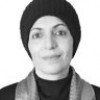Royal Noble Consort Huibin Jang: Magic (Part 2)
The silent beauty of Daebinmyo, Jang’s tomb at Seooreung in April 2023, hides an ugly and dark past. Robert Neff Collection
In 1694, Huibin Jang was removed from power and relegated to an isolated part of the palace, but she was unwilling to quietly accept her plight; she was a master of Joseon’s Machiavellian politics and allegedly even willing to use her dead father as a tool.
According to accounts, a servant from the household of one of her opponents was wined and dined to the point he became so intoxicated that he did not realize his hopae (a wooden identification tag) had been stolen. Within a short period of time, the hopae was discovered at the tomb of Jang’s father. An examination revealed a magical talisman buried near the tomb — presumably in an attempt to supernaturally facilitate Jang’s continued downfall. There were suspicions. The hopae appeared to have been conspicuously placed so that the blame would fall upon Jang’s opponents. No one was fooled and the perpetrators of this supernatural false flag were later punished by the king.
For a period of time, a tenuous peace seemed to exist in the palace between Jang and the queen. In 1699, the crown prince was visited by “The Guest.” This was a polite way of referring to the malevolent spirit associated with smallpox, and its ravages was so severe that children were often not named until after they survived its visit. The Guest did not discriminate between a common laborer’s child and a crown prince.
A shaman was summoned to care for the pre-teen royal heir. His efforts were successful, but not without a price. The boy’s vision suffered and Jang was advised to continue making sacrificial offerings so that she didn’t inadvertently anger The Guest. But was the shaman’s presence needed only for the crown prince?
If the trees could talk, what tales would they whisper at Daebinmyo? Robert Neff Collection
In the spring of 1700, Queen Inhyeon’s health began to deteriorate rapidly. For nearly a year she suffered from swelling, infection and other........
© The Korea Times





















 Toi Staff
Toi Staff Gideon Levy
Gideon Levy Andrew Mitrovica
Andrew Mitrovica David Hutt
David Hutt Neve Gordon
Neve Gordon Patrick Gathara
Patrick Gathara Moncef Khane
Moncef Khane Ron Kronish
Ron Kronish Sabine Kinkartz
Sabine Kinkartz Dr Ramzy Baroud
Dr Ramzy Baroud Rami G Khouri
Rami G Khouri Brahma Chellaney
Brahma Chellaney Tarik Cyril Amar
Tarik Cyril Amar Ghada Ageel
Ghada Ageel Steve Wenick
Steve Wenick Brad Glosserman
Brad Glosserman Fernando Romero Nuñez
Fernando Romero Nuñez
